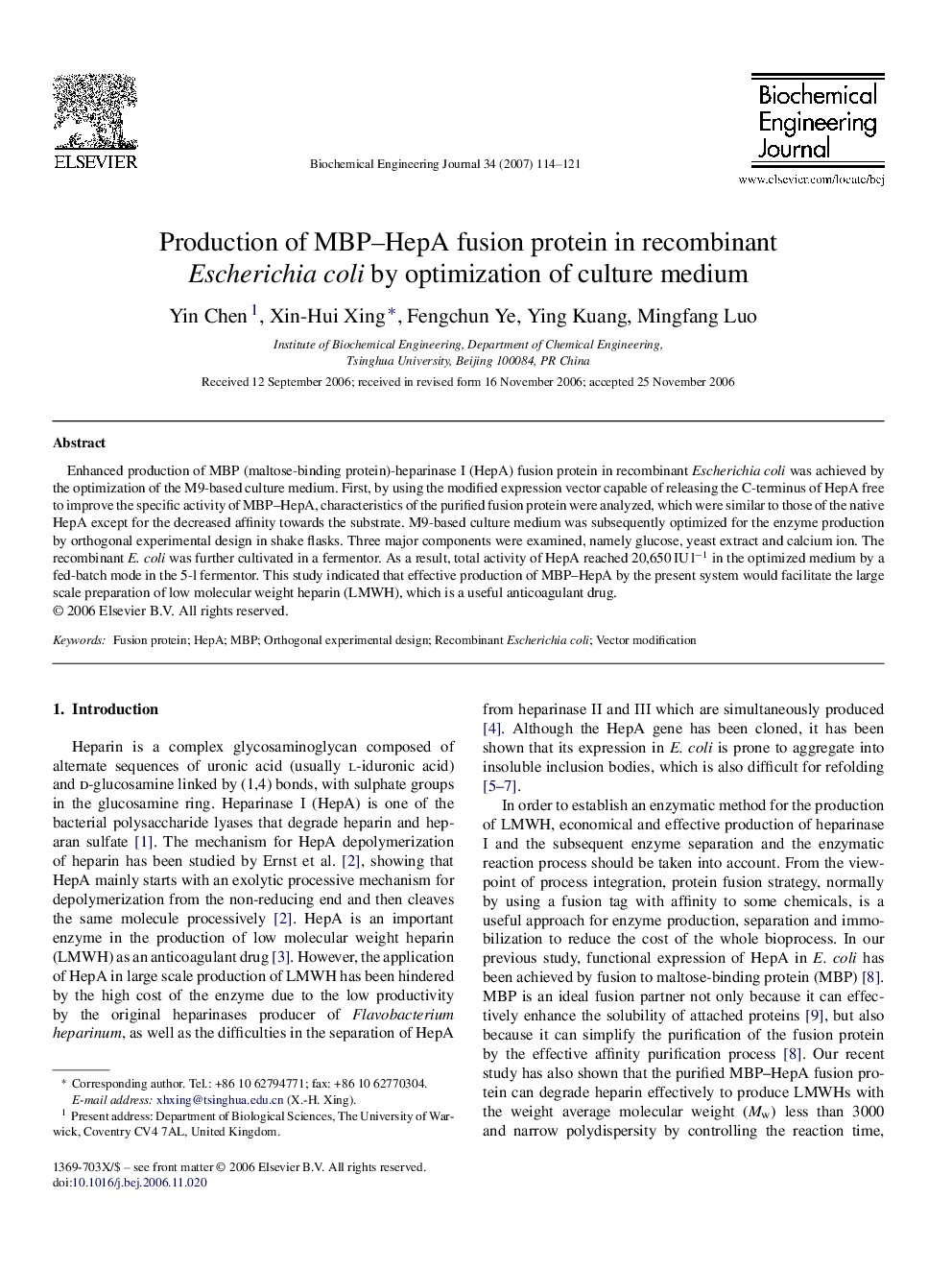| Article ID | Journal | Published Year | Pages | File Type |
|---|---|---|---|---|
| 4905 | Biochemical Engineering Journal | 2007 | 8 Pages |
Enhanced production of MBP (maltose-binding protein)-heparinase I (HepA) fusion protein in recombinant Escherichia coli was achieved by the optimization of the M9-based culture medium. First, by using the modified expression vector capable of releasing the C-terminus of HepA free to improve the specific activity of MBP–HepA, characteristics of the purified fusion protein were analyzed, which were similar to those of the native HepA except for the decreased affinity towards the substrate. M9-based culture medium was subsequently optimized for the enzyme production by orthogonal experimental design in shake flasks. Three major components were examined, namely glucose, yeast extract and calcium ion. The recombinant E. coli was further cultivated in a fermentor. As a result, total activity of HepA reached 20,650 IU l−1 in the optimized medium by a fed-batch mode in the 5-l fermentor. This study indicated that effective production of MBP–HepA by the present system would facilitate the large scale preparation of low molecular weight heparin (LMWH), which is a useful anticoagulant drug.
